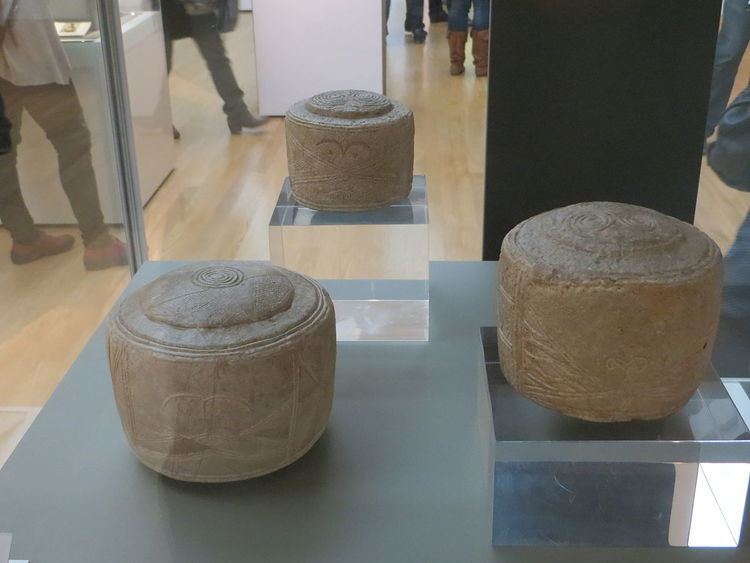Created 2600-2100 BC | Size Height 8.7 cm Discovered 1889 Identification P&EE 1893 12-28 15-17 | |
 | ||
The Folkton Drums are a unique set of decorated chalk objects in the shape of drums or solid cylinders dating from the Neolithic period. Found in a child's grave near the village of Folkton in northern England, they are now in the British Museum.
Contents
Discovery
In 1889, a round prehistoric barrow was opened by the scholar and amateur archaeologist William Greenwell near Folkton in North Yorkshire. Inside, he found a neolithic grave dating to the time of Stonehenge, estimated to be between 2600 and 2000 BC. The remains of several bodies were unearthed, one of whom was a child beside which the three drums were found. The rarity of this find (no other similar artifact is known from Europe) suggests that the child came from an elite group in society. Four years after the discovery, the drums were donated by Greenwell, along with other parts of his collection, to the British Museum.
Description
The three drum-like forms are made of chalk (that was quarried locally) and are decorated with stylized human faces and geometric patterns. On the top of the cylinders are a series of concentric circles and two of them have pairs of eyes that schematically denote a human face. The design of the drums are similar to objects made in the Beaker culture and early bronze age. The purpose of the drums are unknown, although the faces may represent important members of the local clan or they may be a type of children's toy that has uniquely survived, when most would have been made of wood.
